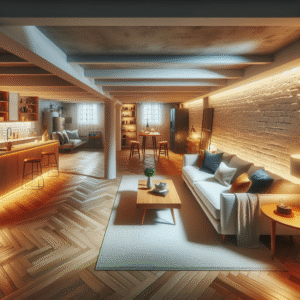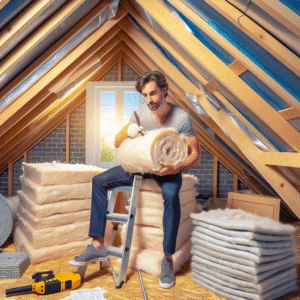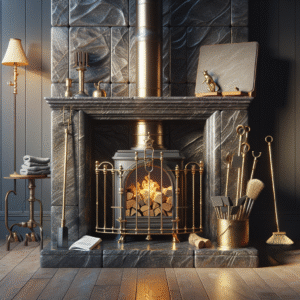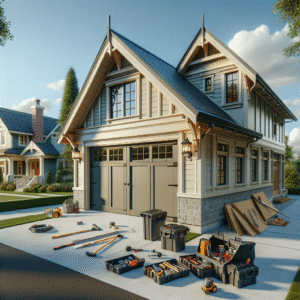Introduction to Preventative Plumbing Maintenance for Cold Weather
As the chill of winter sets in, the importance of preparing your home’s plumbing system becomes paramount. Not only does preventative plumbing maintenance help avoid inconvenient and potentially costly repairs, but it also ensures your home runs efficiently and safely during the colder months. In this guide, we’ll explore the essential steps and benefits of keeping your plumbing in top shape through the winter, so you can enjoy a cozy, trouble-free season.
Understanding the Importance of Plumbing Care in Winter
Maintaining your plumbing during winter is crucial to prevent the common issue of pipes freezing and potentially bursting, which can lead to significant water damage and high repair costs. Effective maintenance helps preserve the longevity of your plumbing system and keeps it operating efficiently, even in the coldest months.
Key Benefits of Maintaining Your Home’s Plumbing System
- Cost Savings: Regular maintenance can significantly reduce the likelihood of incurring expensive emergency repairs.
- Increased Efficiency: Well-maintained plumbing systems operate more efficiently, which can help save on utility bills.
- Safety: By preventing major plumbing failures, you also avoid the safety hazards that can accompany them, such as water damage and mold growth.
Step-by-Step Guide to Winterizing Your Home’s Plumbing
How to Insulate Pipes to Prevent Freezing
Insulating pipes is a key step in preparing your home for winter. This process involves covering pipes, especially those in unheated areas like basements, attics, and garages, with insulating sleeves or tape to keep them warm and reduce the risk of freezing.
Techniques for Draining Outdoor Faucets and Irrigation Systems
Before the first freeze hits, it’s important to drain any water from outdoor faucets and irrigation systems. This prevents residual water from freezing and causing the pipes to burst.
Tips for Adjusting Water Heater Settings for Efficiency and Safety
Adjusting your water heater’s settings can enhance its efficiency and safety during winter. Setting it to a warmer temperature (but no higher than 120°F) can prevent the system from overworking in cold conditions, which helps conserve energy and reduces wear.
Troubleshooting Common Winter Plumbing Problems
Signs of Frozen Pipes and How to Safely Thaw Them
If you notice reduced water flow during cold spells, this could be a sign of frozen pipes. Safely thaw them by applying heat with an electric heating pad, a hairdryer, or towels soaked in hot water—never use open flames.
Dealing with Potential Burst Pipes: Immediate Actions and Long-Term Solutions
In the event of a burst pipe, immediately shut off the main water supply and call a professional plumber. To prevent future occurrences, consider additional pipe insulation or upgrading older pipes.
Professional Services vs. DIY: When to Call a Plumber
While some winter plumbing issues can be handled with DIY methods, more complex problems require professional intervention. If you’re unsure about the severity of a problem or how to fix it, it’s safer and often more cost-effective to hire a licensed plumber.
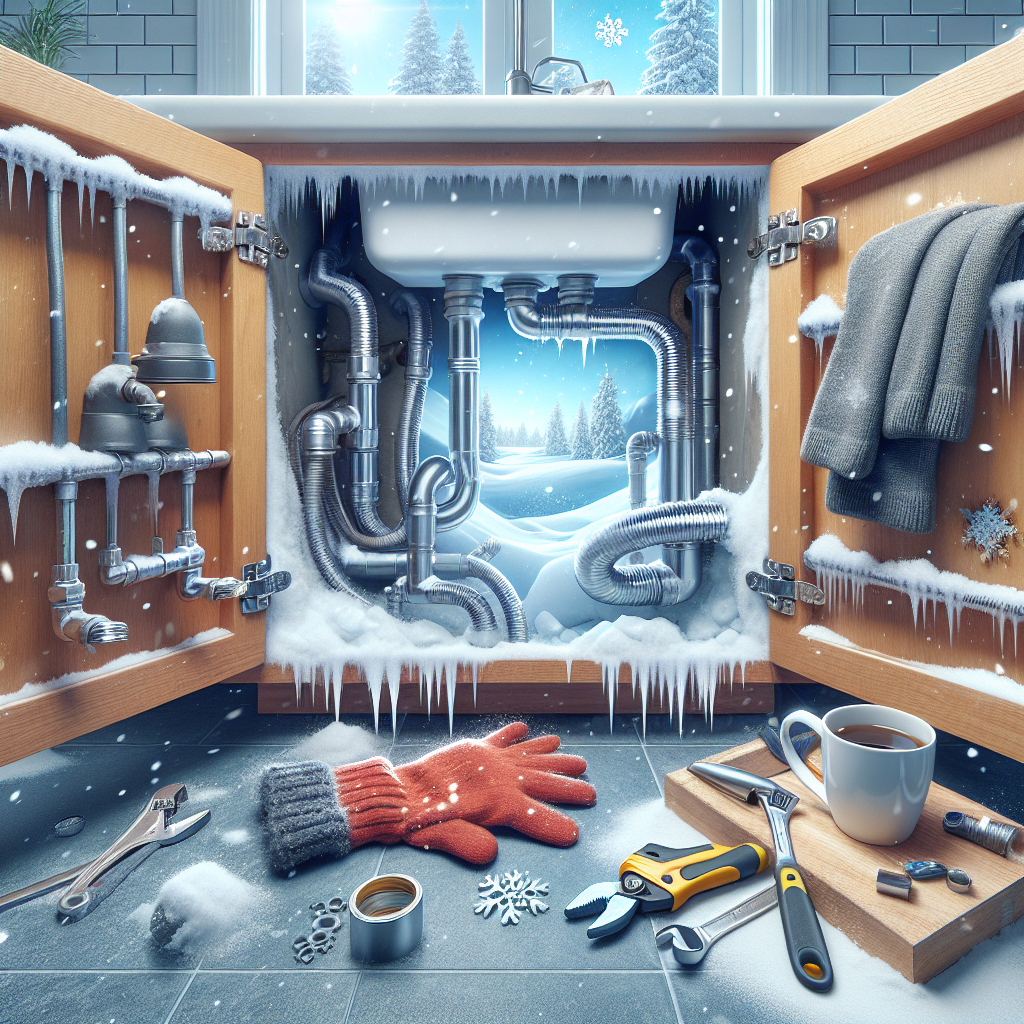
If you’re ready to take your home improvement or construction project to the next level, we can help! Find trusted contractors on BuildNet, whether you’re looking for renovations, new builds, electrical work, plumbing, or anything in between. Our directory connects you with qualified professionals who can make your vision a reality.
Introduction to Preventative Plumbing Maintenance for Cold Weather
As the leaves start to turn and the air takes on that familiar chill, homeowners are reminded that it’s time to start thinking about winterizing their homes—specifically, their plumbing systems. Getting ahead of the winter freeze can not only save you from the inconvenience of frozen pipes but can also protect your home from the potential disasters that come with them. Let’s dive into why preventative plumbing maintenance in the colder months is not just a good idea, but essential.
Understanding the Importance of Plumbing Care in Winter
Many of us may not think about our plumbing system until something goes wrong. However, winter brings with it specific challenges that can affect your plumbing dramatically. Water has a unique property: it expands as it freezes. This expansion can exert tremendous pressure on whatever is containing it, including metal or plastic pipes. No matter the strength of the material, expanding water can cause pipes to break.
Preventative maintenance is crucial because it helps ensure that your home’s plumbing system faces minimal disruption throughout the cold months. This can be especially critical in areas that experience severe temperatures. By taking steps to guard against the cold, you’re not just protecting your pipes, but also maintaining the comfort and safety of your home.
Key Benefits of Maintaining Your Home’s Plumbing System
Maintaining your plumbing system in winter doesn’t just prevent mishaps; it also offers several tangible benefits:
- Cost Savings: Emergency plumbing repairs can be costly, particularly if they occur during holiday periods or after hours. Regular maintenance reduces the likelihood of facing these expensive emergencies.
- Increased Lifespan of Plumbing: By managing your plumbing system and preventing freeze-related damages, you extend the lifespan of your pipes and plumbing fixtures.
- Efficiency and Reliability: A well-maintained plumbing system operates more efficiently and provides reliable service throughout the season. You’ll have peace of mind knowing that your system is less likely to fail when you most need it.
- Home Safety: Preventing pipe bursts helps in avoiding water damage, which can lead to mold and mildew. This not only protects your property but also your health.
Regular maintenance checks by a professional can help identify potential issues before they become serious, saving you time, money, and stress in the long run.
As winter approaches, taking a proactive stance on home maintenance can protect your plumbing from the ravages of cold weather, ensuring it continues to function smoothly and efficiently. Transitioning into the colder months doesn’t have to be stressful—simple preventative measures can safeguard your home against the cold’s harsh impacts. Stay warm and secure in the knowledge that your home is prepared for whatever the winter has in store!
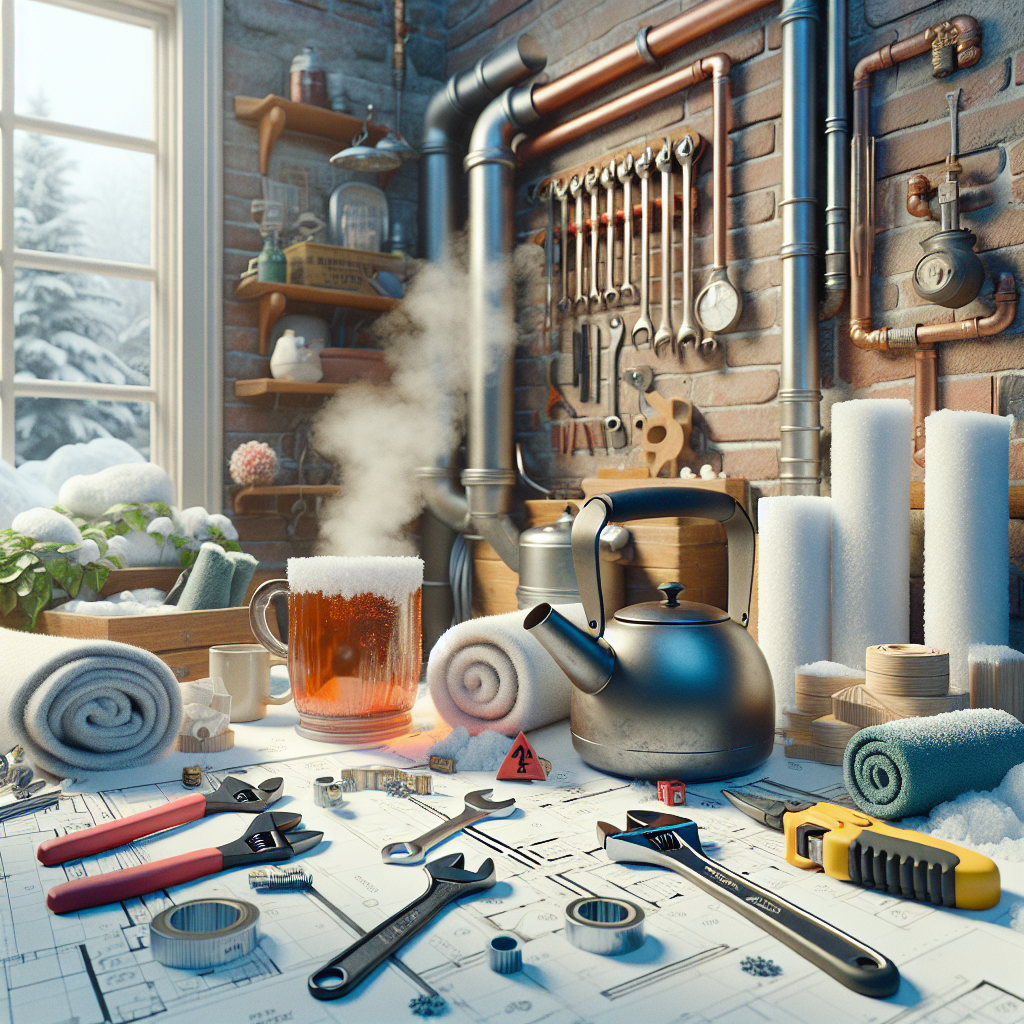
Step-by-Step Guide to Winterizing Your Home’s Plumbing
As the chill sets in, it’s not just your wardrobe that needs a seasonal switch-up; your home’s plumbing system also requires a tune-up to brace for the cold. Let’s dive into how you can safeguard your plumbing against the freezing temperatures, ensuring a cozy and hassle-free winter season.
How to Insulate Pipes to Prevent Freezing
One of the fundamental steps to winter-proof your plumbing is insulating your pipes. This can be a game-changer in preventing the inconvenience and potential damage of frozen pipes. Here’s how to do it:
- Determine which pipes need insulation: Start with pipes in unheated areas such as the garage, attic, and basement. Don’t forget those under kitchen and bathroom cabinets.
- Choose your insulation materials: Foam pipe insulation is popular due to its ease of installation and effectiveness. For extra protection, consider using thermostatically controlled heat tape.
- Install the insulation: Measure the length of the pipes and cut the insulation to fit. Make sure it’s snug around the pipe without gaps. For heat tape, wrap it around the pipe then cover it with insulation for optimal performance.
Insulating your pipes is a simple yet effective way to prevent them from freezing and potentially bursting, which can lead to extensive and costly damage.
Techniques for Draining Outdoor Faucets and Irrigation Systems
Outdoor faucets and irrigation systems are particularly vulnerable in winter. Water left in these systems can freeze, expand, and cause pipes to burst. Here’s how to drain them properly:
- Shut off the water supply: First things first, locate and turn off the water supply to your outdoor faucets and irrigation systems.
- Drain the faucets: Open the outdoor faucets to let any residual water flow out. Leave them open throughout the winter to allow any accumulated water to escape.
- Blow out irrigation lines: For irrigation systems, it’s best to use an air compressor to blow out the lines. This ensures that all water is expelled from the pipes and sprinkler heads.
Draining your outdoor water systems not only prevents pipe bursts but also prolongs the life of your faucets and irrigation equipment.
Tips for Adjusting Water Heater Settings for Efficiency and Safety
Winter demands more from your water heater, not only for comfort but for safety reasons as well. Here’s how to adjust your water heater settings optimally:
- Check the thermostat: Set your water heater thermostat to 120°F (49°C). This temperature is hot enough for daily needs without being scalding, and efficient enough to reduce heating costs.
- Inspect for leaks: Give your water heater a quick visual inspection for any signs of leakage. Early detection can prevent major repairs down the line.
- Flush the tank: Sediment can build up in your water heater tank, especially if it’s been working overtime during the colder months. Flushing the tank can improve efficiency and prolong its lifespan.
Adjusting your water heater not only ensures it runs efficiently but also secures a safe and warm water supply through the chilly season.
By following these thorough but manageable steps, you’ll not only extend the life of your plumbing system but also enhance the comfort and safety of your home during the winter months. Remember, a little preparation goes a long way in preventing mid-winter plumbing mishaps!
Troubleshooting Common Winter Plumbing Problems
When Jack Frost comes nipping, our home plumbing systems often bear the brunt of the cold. Freezing temperatures can wreak havoc on pipes, water heaters, and more. Let’s dive into some common winter plumbing issues, how to tackle them, and when it might be time to call in the pros.
Signs of Frozen Pipes and How to Safely Thaw Them
First up, the notorious frozen pipe. It’s a silent menace that can cause serious damage if not addressed promptly. Here’s how you can tell if your pipes are frozen:
- Lack of Running Water: This is often the first sign. If you turn on a faucet and only a trickle comes out, suspect a freeze.
- Frost on Pipes: Visible frost accumulating on any exposed pipes is a dead giveaway.
- Strange Smells: A blocked pipe can cause odors to back up and emit from your drains.
If you’ve identified that you indeed have frozen pipes, here’s how to thaw them safely:
- Keep the Faucet Open: As you treat the frozen pipe and the ice begins to melt, water will flow through the frozen area. Running water will help melt ice in the pipe.
- Apply Heat: Use an electric heating pad wrapped around the pipe, an electric hair dryer, or a portable space heater (kept away from flammable materials). Do not use a blowtorch, kerosene or propane heater, or other open flame device.
- Warm the Space: If the frozen pipe is in an unheated area, use a space heater to warm the surroundings safely.
- Apply Insulation: Once thawed, prevent future freezing by insulating pipes in cold areas.
Dealing with Potential Burst Pipes: Immediate Actions and Long-Term Solutions
A burst pipe can cause significant water damage and quickly turn into a homeowner’s nightmare. If you discover a burst pipe:
- Turn Off the Water: Immediately shut off the main water line to prevent more water from flowing and causing damage.
- Drain the Faucets: Turn on all cold water taps to drain remaining water in the system and reduce pressure on frozen pipes.
- Turn Off Electricity: If the water leak is near any electrical outlets or devices, shut off the power at the breaker box.
- Call a Professional: Burst pipes require professional repair. They can assess the damage, repair the pipe, and check for any other potential issues.
For long-term solutions, consider the following:
- Regular Inspections: Have a professional inspect your plumbing system annually before the cold season begins.
- Install Pipe Insulation: This is an inexpensive way to protect pipes in cold areas, especially those exposed to severe cold.
- Install a Water Leak Detection System: These systems can alert you to leaks before they cause major damage.
Professional Services vs. DIY: When to Call a Plumber
While many minor plumbing issues can be handled on your own, certain situations call for professional expertise. Here’s when you should definitely call a plumber:
- When You’re Out of Your Depth: If you’re unsure about your ability to fix the issue safely and effectively, it’s time to call in the pros.
- Recurring Problems: If you’ve tried to fix something multiple times and the problem persists, there might be a deeper issue that only a professional can diagnose and solve.
- Major Installations or Repairs: Jobs like replacing a water heater, extensive pipe repairs, or remodeling work should be left to a professional to ensure safety and compliance with local building codes.
Remember, dealing with plumbing issues promptly can not only save you from potential damage and costly repairs but also ensure that your winter remains cozy and dry. Whether you choose to DIY or call the experts, keeping your home’s plumbing in top shape is key to enjoying the colder months worry-free!
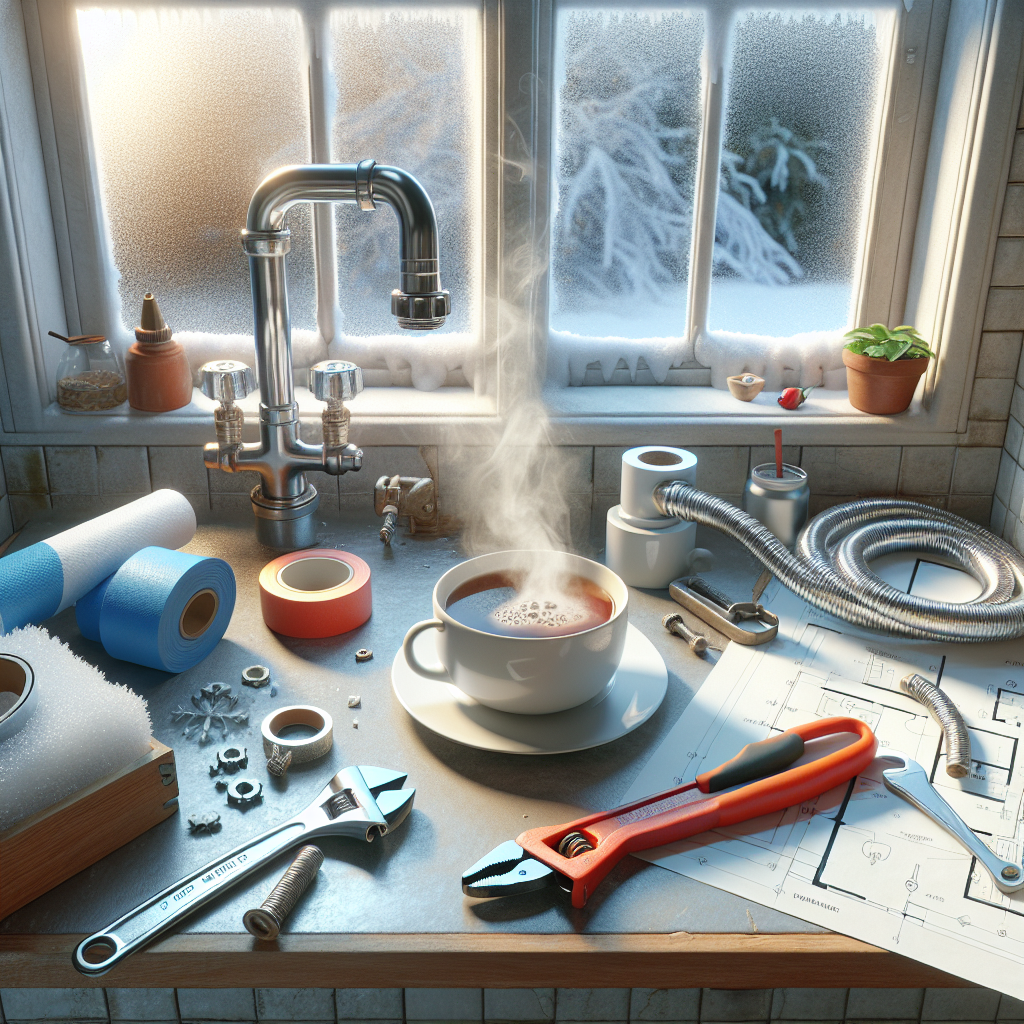
What is the best way to insulate pipes to prevent them from freezing?
Insulating your pipes is a key step in preparing your plumbing for cold weather. Use foam pipe insulation which you can easily slip over your pipes. This type of insulation is available in most hardware stores and comes in various sizes. Make sure to cover all exposed pipes, especially those in unheated areas like basements, attics, and garages. For extra protection, consider using thermostatically controlled heat tape that automatically turns on when temperatures drop.
How do I drain outdoor faucets and irrigation systems properly?
To prevent your outdoor faucets and irrigation systems from freezing and bursting, it’s crucial to drain them before the winter sets in. For faucets, shut off the indoor valve that controls the water flow to outdoor faucets, then open the outdoor faucet to let any remaining water flow out. For irrigation systems, use compressed air to blow the water out of the pipes or, if available, activate the system’s built-in manual or automatic drain valve.
What are the ideal water heater settings for winter?
During winter, setting your water heater to a higher temperature can help prevent pipes from freezing, but it should not exceed 120°F to avoid scalding risks and to maintain energy efficiency. If your water heater is in a cold area like a basement, consider insulating it with a water heater blanket to maintain the temperature more effectively.
How can I tell if my pipes are frozen?
Signs of frozen pipes include reduced water flow from faucets or showers, frost on the pipe surfaces, or strange smells coming from a faucet or drain (which happens when the pipe is blocked and the only way for odors to escape is back into your home). If you notice any of these signs, it’s crucial to act quickly to thaw the pipes before they burst.
What is the safest way to thaw frozen pipes?
If you discover a frozen pipe, open the faucet that the pipe feeds water into to help relieve pressure and allow the ice to melt. Use a hair dryer, heat lamp, or portable space heater to thaw the pipe, but never use open flame devices like blowtorches. Start thawing near the faucet and work your way down to the coldest part of the pipe.
What should I do if a pipe bursts in my home?
In the event of a burst pipe, immediately shut off the main water supply to your house to minimize water damage. Next, open all faucets to drain the remaining cold water and relieve pent-up pressure. Call a professional plumber as soon as possible to repair the damage. While waiting, you can begin mopping up water to prevent further damage to your property.
When should I call a professional plumber instead of attempting DIY repairs?
While some minor plumbing issues can be handled on a DIY basis, significant problems like burst pipes, major leaks, or extensive frozen pipe systems should be addressed by professional plumbers. They have the tools, technology, and expertise to solve the problem efficiently and effectively, minimizing damage to your home.
Can I get a free quote for plumbing services through BuildNet?
Yes, you certainly can! If you’re facing any plumbing issues or just want to ensure your plumbing system is winter-ready, visit the BuildNet website. We connect you with experienced local contractors who can provide free quotes and expert services tailored to your needs.
In conclusion,
Preparing your home’s plumbing for the cold weather is crucial in preventing inconvenient and potentially costly problems like frozen or burst pipes. By following the steps outlined above— from insulating your pipes to draining outdoor systems and setting your water heater correctly — you can enjoy a worry-free winter. For troubleshooting severe issues or if you’re unsure about performing maintenance yourself, don’t hesitate to contact a professional. Remember, BuildNet is here to connect you with reliable local contractors who can provide expert services and free quotes. Stay warm and secure this winter by ensuring your plumbing is up to par!

